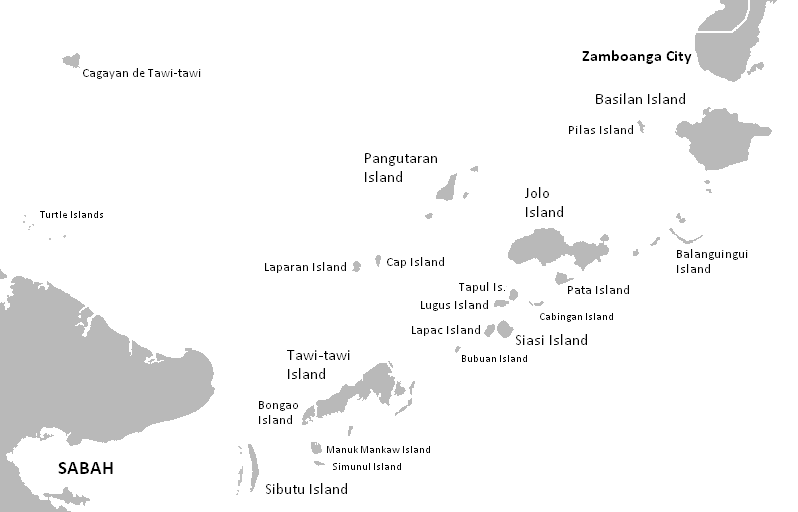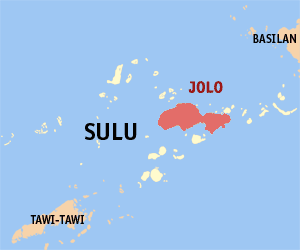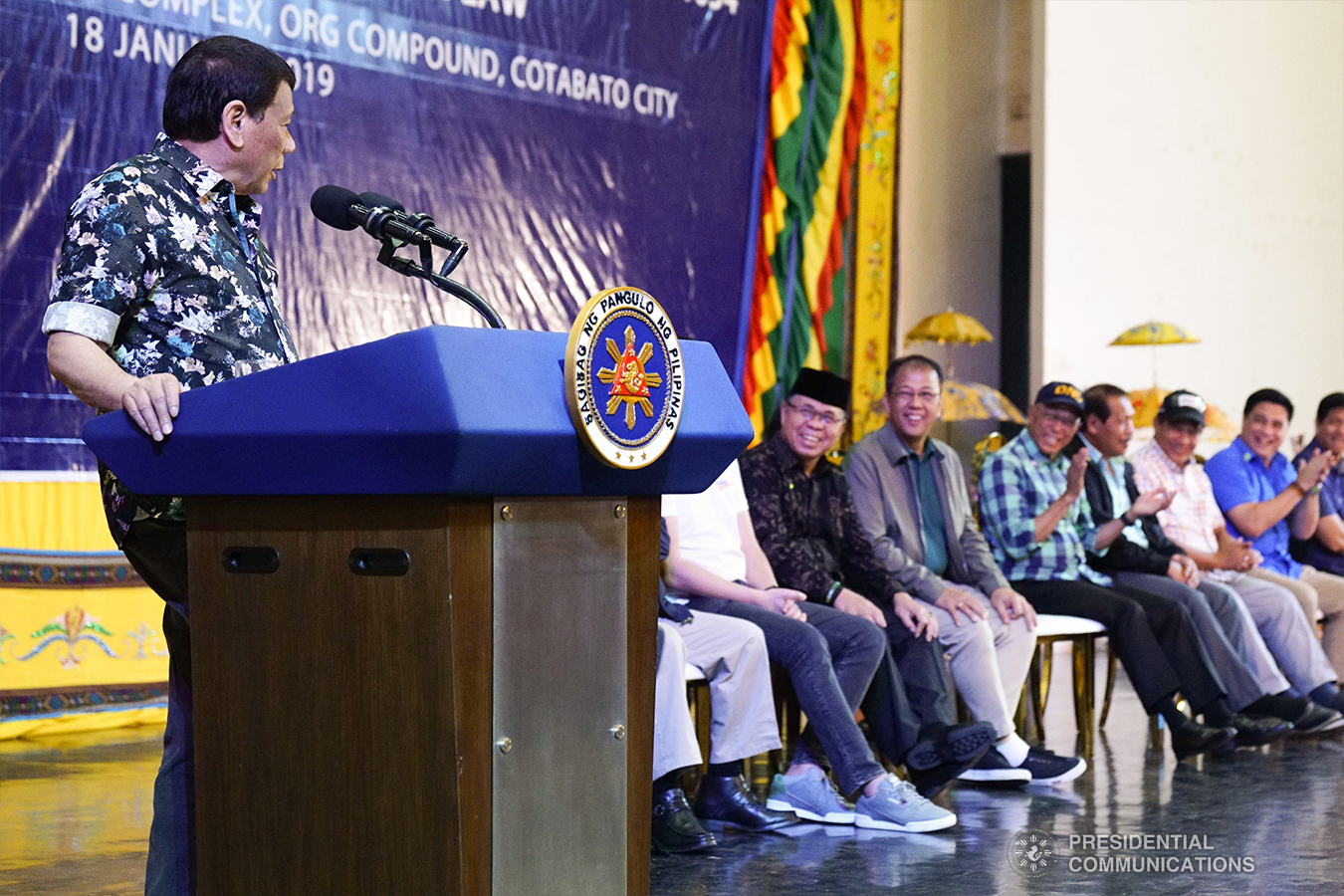|
Sulu
Sulu (), officially the Province of Sulu (Tausug language, Tausūg: ''Wilaya' sin Lupa' Sūg''; ), is a Provinces of the Philippines, province of the Philippines in the Sulu Archipelago. It was part of the Bangsamoro, Bangsamoro Autonomous Region in Muslim Mindanao (BARMM), until the Supreme Court of the Philippines on September 9, 2024 declared its inclusion to be unconstitutional because of the province's simple majority vote against it during the 2019 Bangsamoro autonomy plebiscite. Its capital is Jolo, Sulu, Jolo on the Jolo, island of the same name. Maimbung, the royal capital of the Sultanate of Sulu, is also located in the province. Sulu is along the southern border of the Sulu Sea and the northern boundary of the Celebes Sea. Out of all 82 provinces in the Philippines, it is the poorest, as evidenced by it having the highest poverty rate. According to the Philippine Statistics Authority, poverty incidence in Sulu had reduced in 2021 with 51 percent compared to 75.3 p ... [...More Info...] [...Related Items...] OR: [Wikipedia] [Google] [Baidu] |
Sultanate Of Sulu
The Sultanate of Sulu (; ; ) is a Sunni Muslim subnational monarchy in the Philippines, Republic of the Philippines that includes the Sulu Archipelago, coastal areas of Zamboanga City and certain portions of Palawan in today's Philippines. Historically, the Sultanate included parts of present-day Sabah and North Kalimantan in north-eastern Borneo, but Malaysia does not recognize the territory of North Borneo as part of the Sultanate. The sultanate was founded either on 17 November 1405 or 1457 by Johore-born explorer and Sunni religious scholar Sharif ul-Hāshim of Sulu, Sharif ul-Hashim. ''Paduka Mahasari Maulana al Sultan Sharif ul-Hashim'' became his full regnal name; ''Sharif-ul Hashim'' is his abbreviated name. He settled in Buansa, Sulu. The sultanate gained its independence from the Bruneian Empire in 1578. At its peak, it stretched over the islands that bordered the western peninsula of Zamboanga Peninsula, Zamboanga in Mindanao in the east to Palawan in the north. ... [...More Info...] [...Related Items...] OR: [Wikipedia] [Google] [Baidu] |
Jolo, Sulu
Jolo, officially the Municipality of Jolo (; ; ), is a municipality and capital of the province of Sulu, Philippines. According to the 2020 census, it has a population of 137,266 people. Etymology According to Dr. Najeeb M. Saleeby (1908) and in old maps such as the Velarde map, ''"Joló"'' was the historical Spanish spelling of the word ''"Sulu"'' that now refers to the province and the whole Sulu Archipelago, which the early Spaniards historically spelt as ''"Xoló"'', with the initial letter most likely formerly pronounced with the Early Modern Spanish sound, with the Spanish pronunciation of Sulu, but later evolved into the Modern Spanish , leading to its modern pronunciation . In many dialects, the initial sound is glottal, yielding . The Spanish version ''Joló'' is still used to pertain Sulu (both province, archipelago, and ancient sultanate) in Spanish writings. Meanwhile, the word ''"Sulu"'' itself comes from , an older form of . History Pre-Colonial period In th ... [...More Info...] [...Related Items...] OR: [Wikipedia] [Google] [Baidu] |
Sulu Archipelago
The Sulu Archipelago ( Tausug: Kapū'-pūan sin Sūg Sulat Sūg: , ) is a chain of islands in the Pacific Ocean, in the southwestern Philippines. The archipelago forms the northern limit of the Celebes Sea and southern limit of the Sulu Sea. The Sulu Archipelago islands are within the Mindanao island group, consisting of the Philippines provinces of Basilan, Sulu, and Tawi-Tawi; hence the archipelago is sometimes referred to as Basulta, derived from the first syllables of the three provinces. The archipelago is not, as is often supposed, the remains of a land bridge between Borneo and the Philippines. Rather, it is the exposed edge of small submarine ridges produced by tectonic tilting of the sea bottom. Basilan, Jolo, Tawi-Tawi and other islands in the group are extinct volcanic cones rising from the southernmost ridge. Tawi-Tawi, the southernmost island of the group, has a serpentine basement-complex core with a limestone covering. This island chain is an important ... [...More Info...] [...Related Items...] OR: [Wikipedia] [Google] [Baidu] |
Bangsamoro
Bangsamoro, officially the Bangsamoro Autonomous Region in Muslim Mindanao (BARMM; ; ), is an autonomous region in the Philippines, located in the southwestern portion of the island of Mindanao. Replacing the Autonomous Region in Muslim Mindanao (ARMM), the BARMM was formed with the ratification of its basic law, the Bangsamoro Organic Law, following a two-part legally binding plebiscite in Western Mindanao held on January 21 and February 6, 2019. The ratification was confirmed a few days later on January 25 by the Commission on Elections (COMELEC). The establishment of Bangsamoro was the culmination of several years of peace talks between the Philippine government and several autonomist groups; in particular the Moro Islamic Liberation Front (MILF), which rejected the validity of the ARMM and called for the creation of a region with more powers devolved from the national government. A framework agreement known as the Comprehensive Agreement on the Bangsamoro was negotiat ... [...More Info...] [...Related Items...] OR: [Wikipedia] [Google] [Baidu] |
Legislative Districts Of Sulu
The legislative districts of Sulu are the representations of the province of Sulu in the various national legislatures of the Philippines. The province is currently represented in the lower house of the Congress of the Philippines through its first and second congressional districts. History Initially being excluded from representation in the lower house of the Philippine Legislature in 1907, the then-non-Christian-majority areas of the Philippines — which included the Department of Mindanao and Sulu, of which Sulu (including what is now Tawi-Tawi) was part — were finally extended legislative representation with the passage of the Philippine Autonomy Act in 1916 by the United States Congress. The Revised Administrative Code (Act No. 2711) enacted on March 10, 1917, further elaborated on the manner by which these areas would be represented. The non-Christian areas were to be collectively represented in the upper house's 12th senatorial district by two senators, both appoint ... [...More Info...] [...Related Items...] OR: [Wikipedia] [Google] [Baidu] |
Tausug Language
Tausūg (, , , ) is an Austronesian language spoken in the province of Sulu in the Philippines and in the eastern area of the state of Sabah, Malaysia. It is widely spoken in the Sulu Archipelago (Sulu, Tawi-Tawi, and Basilan), the Zamboanga Peninsula ( Zamboanga del Norte, Zamboanga Sibugay, Zamboanga del Sur, and Zamboanga City), southern Palawan, Malaysia (eastern Sabah), and Indonesia ( Tarakan City and Nunukan Regency, province of North Kalimantan). Tausūg has some lexical similarities or near similarities with Surigaonon language of the provinces Surigao del Norte, Surigao del Sur, and Agusan del Sur and with the Butuanon language of Agusan del Norte; it has also some vocabulary similarities with Sugbuanon, Bicolano, and with other Philippine languages. Many Malay and Arabic words are found in Tausug language. Nomenclature In English, the language is primarily known as Tausug (i.e., Tausug language). The local name of the language is ''bahasa Sūg'' or '' ... [...More Info...] [...Related Items...] OR: [Wikipedia] [Google] [Baidu] |
Jolo
Jolo () is a volcanic island in the southwest Philippines and the primary island of the province of Sulu, on which the capital of the same name is situated. It is located in the Sulu Archipelago, between Borneo and Mindanao, and has a population of approximately 500,000 people. The island is the location of the Jolo Group of Volcanoes, an active volcanic group, and contains numerous volcanic cones and craters, including the active Bud Dajo cinder cone. It has been the headquarters of militants from the terrorist group Abu Sayyaf. Etymology History After a series of less-than-successful attempts during the centuries of Spanish rule in the Philippines, Spanish forces captured the city of Jolo, the seat of the Sultan of Sulu, in 1876. On that year, the Spanish launched a massive campaign to occupy Jolo. Spurred by the need to curb slave raiding once and for all and worried about the presence of other Western powers in the south (the British had established trading cente ... [...More Info...] [...Related Items...] OR: [Wikipedia] [Google] [Baidu] |
Abdusakur Mahail Tan
Abdusakur "Sakur" Mahail Tan (born July 13, 1950 in Maimbung) is a Filipino politician and current governor of Sulu in the Bangsamoro Autonomous Region in Muslim Mindanao. He previously served as the Vice Governor of Sulu. Background Tan is of Chinese- Tausug descent and was born on July 13, 1950, in Maimbung, Sulu, the eldest child of Abubakar Tan (former mayor of Maimbung) and Satriya Mahail. He attended high school at the Notre Dame of Jolo for Boys and obtained a bachelor's degree in 1983 from the Notre Dame of Jolo College. He is married to Nurunisah Abubakar-Tan, former Vice Governor of Sulu (daughter of former Jolo mayor Habib Aminkandra N. Abubakar) and has five children. Political career Tan established a political base in Jolo by aligning himself with the Abubakar and Isquerdo families. He served first as a municipal councilor of Jolo (1981–87), then as the representative of Sulu's first congressional district (1987–1992) and as governor (1996–2001). He los ... [...More Info...] [...Related Items...] OR: [Wikipedia] [Google] [Baidu] |
2019 Bangsamoro Autonomy Plebiscite
The 2019 Bangsamoro autonomy plebiscite was a two-part plebiscite held in Mindanao, Philippines, that ratified the Bangsamoro Organic Law (BOL) and replaced the Autonomous Region in Muslim Mindanao (ARMM) with the Bangsamoro Autonomous Region in Muslim Mindanao (BARMM), as well as the scope of the said region. Under the organic law, the government would have to hold the plebiscite not more than 150 days from the signing of the BOL into law (July 26, 2018) but not earlier than 90 days from the law's signing. The first part of the plebiscite was held on January 21, 2019, where voters from the ARMM voted regarding the BOL's ratification and residents of Cotabato City and Isabela City voted for or against their cities' inclusion into the then-proposed region. The second part was held on February 6 to potentially expand the BARMM; with voters from six municipalities in Lanao del Norte and 67 barangays in Cotabato province voting for or against their localities' inclusion into the BA ... [...More Info...] [...Related Items...] OR: [Wikipedia] [Google] [Baidu] |
Patikul
Patikul, officially the Municipality of Patikul ( Tausūg: ''Kawman sin Patikul''; ), is a municipality in the province of Sulu, Philippines. According to the 2020 census, it has a population of 79,564 people. The provincial capitol and offices are located in this municipality. The municipality is used to be known for being a stronghold of the Abu Sayyaf insurgent group. History Colonial period Spanish occupation The municipality of Patikul, situated east of Jolo, was a settlement at an isolated hill, far from the beach, by the 19th century. In 1876, the expedition aimed to conquer the Jolo island, led by Governor-General José Malcampo and consisted of 9,000 troops which had left Manila on February 5, had a force disembarked at the area on the 22nd, a day after reaching the island through Zamboanga. The Moros resisted, causing some casualties, but later escaped. Following the destruction of Jolo, the datus dispersed in all directions, except those remained in Tandu and Patik ... [...More Info...] [...Related Items...] OR: [Wikipedia] [Google] [Baidu] |
Maimbung
Maimbung, officially the Municipality of Maimbung ( Tausūg: Kawman sin Maimbung; ), is a municipality in the province of Sulu, Philippines. According to the 2020 census, it has a population of 59,597 people. It was the seat of the Sultanate of Sulu. History The town hosted the Daru Jambangan (Palace of Flowers) which was the royal palace of the Sultan of Sulu since historical times. The palace was made of wood, and was destroyed in 1932 by a huge storm. Today, a few arches and posts remain from the once grand palace complex. Many members of the royal family advocated for the reconstruction of the palace, and even its enlargement, however, the government of the Philippines has yet to establish a position or a fund for the matter. The town was officially cited by the late Sultan Jamalul Kiram III of the Sultanate of Sulu as the capital of the sultanate, and the place where he wished he was buried after death. The late sultan died in 2013 and was buried in the town afterwards. ... [...More Info...] [...Related Items...] OR: [Wikipedia] [Google] [Baidu] |
Chavacano
Chavacano or Chabacano () is a group of Spanish-based creole language varieties spoken in the Philippines. The variety spoken in Zamboanga City, located in the southern Philippine island group of Mindanao, has the highest concentration of speakers. Other currently existing varieties are found in Cavite City and Ternate, located in the Cavite province on the island of Luzon. Chavacano is the only Spanish-based creole in Asia. The 2020 Census of Population and Housing counted 106,000 households generally speaking Chavacano. The one responsible for this Spanish creole was Don Sebastian Hurtado de Corcuera, then governor of Panama, who was also responsible for settling Zamboanga City by employing Peruvian soldiers and colonists. There was an Asian-American route, which led to traders and adventurers carrying silver from Peru through Panama to reach Acapulco, Mexico before sailing to Manila, Philippines using the famed Manila galleons. The different varieties of Chavacano dif ... [...More Info...] [...Related Items...] OR: [Wikipedia] [Google] [Baidu] |







